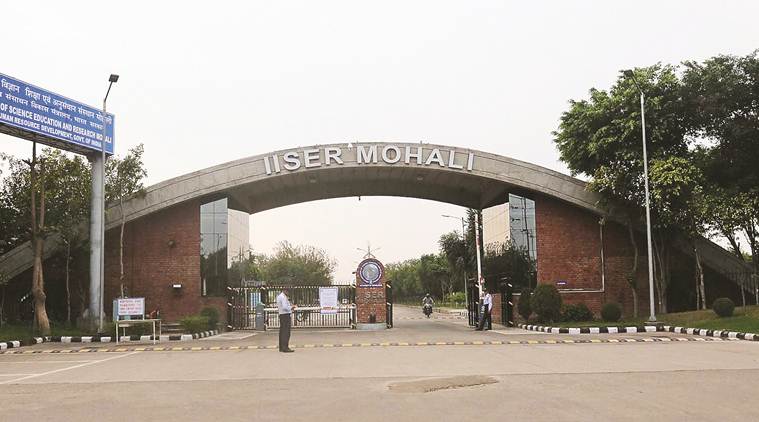Stay updated with the latest - Click here to follow us on Instagram
Mohali institute IISER behind device to study pollutants released by farm fires
Since there are only two such devices installed in India, most government agencies remain unaware of the rates of such emissions, alongside their hazardous effects on the human body.
 Proton Transfer Reaction Mass Spectrometry (PTRMS) is a sophisticated device used to measure pollutants such as volatile organic compounds (VOCs) and reactive hydroxyls (OH) released by farm fires
Proton Transfer Reaction Mass Spectrometry (PTRMS) is a sophisticated device used to measure pollutants such as volatile organic compounds (VOCs) and reactive hydroxyls (OH) released by farm fires
FEW PEOPLE know about it but the Indian Institute of Science Education and Research (IISER), Mohali, is credited with inventing a device to measure pollutants released when you burn agricultural waste. At present, there are only two such devices in the country.
Proton Transfer Reaction Mass Spectrometry (PTRMS) is a sophisticated device used to measure pollutants such as volatile organic compounds (VOCs) and reactive hydroxyls (OH) released by farm fires. Since there are only two such devices installed in India, most government agencies remain unaware of the rates of such emissions, alongside their hazardous effects on the human body.
“Apart from levels of PM 2.5, there are various other pollutants caused by the burning of agricultural waste that most government agencies remain unaware of. These pollutants are potentially cancer-causing,” said Dr Vinayak Sinha from the Department of Earth and Environmental Sciences at IISER.
According to the study published by Sinha in January 2018, the burning of biomass such as agricultural waste leads to emission of more than 500 different types of VOCs, including the carcinogenic compound benzene. The study posits that the cancer risk caused by benzene amounts to 25 and 10 per million inhabitants for children and adults respectively, exceeding the United States Environmental Protection Agency’s threshold of one per million inhabitants.
The release of Isocyanide, another VOC, is known to increase risks of cardiovascular diseases and cataracts. The total level of VOCs in the air is reportedly around 1.5 times higher than the annual average in the months after crop burning.
Sinha, along with other scientists, has done extensive research on the effect of crop burning on the ambient air quality of Punjab, Haryana and Delhi. Last Sunday, air quality monitors claimed that the number of toxic pollutants in Delhi’s air were 50 times the level recommended by the World Health Organization. According to SAFAR, India’s official air quality regulating authority, 46 per cent of the total air pollution in Delhi this week can be attributed to crop burning in the neighbouring states of Haryana and Punjab.
Sinha explains that all government measurement agencies and devices use particulate matter 2.5 — air pollutants that can cause serious and chronic illnesses such as lung cancer on long-term exposure — as the major parameter for measuring pollution levels but completely ignore the effects of other harmful air pollutants.
“The damage caused by air pollutants such as VOCs will only keep increasing since there are no regulatory policies to keep their levels in check. Far from regulatory policies, most government agencies don’t even know about the existence of such pollutants in the air,” claimed Sinha, who along with other scientists at IISER, had worked on setting up a testing machine for such pollutants in August 2011.
Sinha’s research focuses on the effects of biomass burning in the North-Western Indo-Gangetic Plain (NWIGP), which is often referred to as the breadbasket of India and includes Punjab and Haryana. Approximately 67.7 Tg of agricultural residue is burnt over 9,593 km square of cropland annually in NWIGP. The research calculated that there was an average of 120 per cent increase in the levels of reactionary hydroxyl levels in the air after periods of crop residual burning in the NWIGP. The measure of hydroxyl or OH reactivity is a robust measure of the total reactive gaseous pollutants in the air.
Furthermore, as the burden of severe levels of pollution has fallen onto farmers, with the Supreme Court calling for a complete halt to the practice of stubble burning on Monday, there has been little to no discussion on the effects of stubble burning on the farmers themselves. A study published in 2015 in the Journal of Atmospheric Chemistry and Physics suggests that the rising levels of reactionary OH in the atmosphere significantly reduced average crop yield in Punjab and Haryana.
This study reveals that rising OH levels increase the levels of ozone closer to the surface of the earth. Ozone remains beneficial to the earth’s environment at a height of 20-50 km above the earth’s surface, but closer to the ground high levels of ozone are toxic. This increase in ozone levels led to a crop yield which incurred a loss of about $ 3.7 Billion to the states of Haryana and Punjab in the fiscal year of 2013-14.







